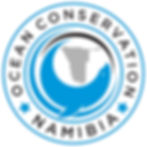top of page

Social Media
Information Campaign: Ocean Literacy

Did you know that life on Earth wouldn't exist without the oceans?
Whether we're aware of it or not, we all depend on the ocean. Covering over 70% of our planet, the oceans are home to millions of species - many of them are still undiscovered! The ocean plays a major role in regulating our climate, producing oxygen, and supporting billions of livelihoods.
Over the next few weeks, we’ll be sharing fascinating and surprising ocean facts. We'll dive into how the oceans make life on Earth posWhether we're aware of it or not, we all depend on the ocean. Covering over 70% of our planet, the oceans are home to millions of species - many of them are still undiscovered! The ocean plays a major role in regulating our climate, producing oxygen, and supporting billions of livelihoods.
Over the next few weeks, we’ll be sharing fascinating and surprising ocean facts. We'll dive into how the oceans make life on Earth possible, and how our actions impact and threaten them. So let’s get started!sible, and how our actions impact and threaten them. So let’s get started!
Over the next few weeks, we’ll be sharing fascinating and surprising ocean facts. We'll dive into how the oceans make life on Earth posWhether we're aware of it or not, we all depend on the ocean. Covering over 70% of our planet, the oceans are home to millions of species - many of them are still undiscovered! The ocean plays a major role in regulating our climate, producing oxygen, and supporting billions of livelihoods.
Over the next few weeks, we’ll be sharing fascinating and surprising ocean facts. We'll dive into how the oceans make life on Earth possible, and how our actions impact and threaten them. So let’s get started!sible, and how our actions impact and threaten them. So let’s get started!

The Five World Oceans
The world is home to five major oceans: the Pacific, Atlantic, Indian, Southern, and Arctic (the smallest and shallowest).
These oceans are all interconnected and are crucial for regulating our climate, supporting marine life, and driving global trade.
These oceans are all interconnected and are crucial for regulating our climate, supporting marine life, and driving global trade.

The Pacific Ocean
The Pacific Ocean is the largest and deepest ocean on our planet. It covers more than 30% of the Earth’s surface and has more than 25.000 islands.
The Pacific Ocean is so big that it covers more surface area than all the landmasses on Earth combined!
The Pacific Ocean is so big that it covers more surface area than all the landmasses on Earth combined!

Did you know that over half of the Earth's oxygen comes from tiny ocean plants called phytoplankton?
These incredible organisms float on the ocean's surface, where they absorb sunlight to produce oxygen through photosynthesis. The oxygen they generate eventually reaches our atmosphere. Phytoplankton are vital to marine food chains, supporting everything from small zooplankton to giant whales.
Shifts in temperature, acidity, or nutrient levels can severely impact phytoplankton populations. A decline in these organisms could reduce oxygen levels and endanger aquatic ecosystems all over the world, all due to ocean pollution and climate change.
Shifts in temperature, acidity, or nutrient levels can severely impact phytoplankton populations. A decline in these organisms could reduce oxygen levels and endanger aquatic ecosystems all over the world, all due to ocean pollution and climate change.

Why is the ocean so salty?
It's because rain washes minerals from rocks on land into rivers, which then carry them to the sea. Over millions of years, this process has added tons of salt to the ocean. This salt is vital for marine life and the overall health of our planet.
If we were to spread all the salt in the ocean over the land, it would create a layer 152 meters (500 feet) thick!
If we were to spread all the salt in the ocean over the land, it would create a layer 152 meters (500 feet) thick!
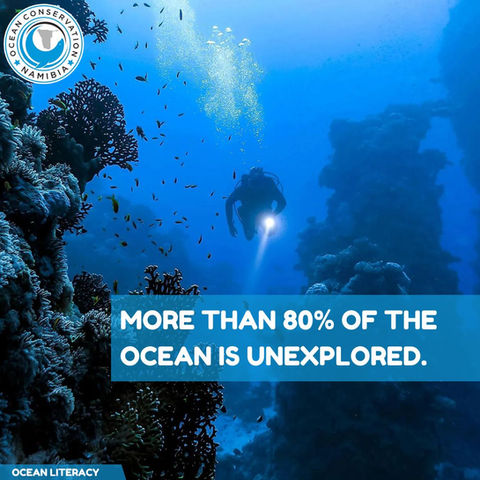
More than 80% of the ocean is unexplored.
We've explored the surfaces of the moon and even Mars more extensively than the depths of our own oceans! Despite covering over 70% of Earth, our oceans remain largely unexplored.
Scientists believe that more than 90% of ocean species are yet to be discovered, possibly numbering in the hundreds of thousands to millions.
Scientists believe that more than 90% of ocean species are yet to be discovered, possibly numbering in the hundreds of thousands to millions.

The ocean absorbs over 30% of the Earth's carbon dioxide.
The ocean absorbs CO2 from the atmosphere because marine plants convert CO2 into organic matter and oxygen, through photosynthesis. Some of the carbon absorbed by the ocean settles into the deep sea or becomes part of marine life, where it can be stored for a long time.
However, absorbing CO2 makes the ocean more acidic, which can harm marine life like corals and plankton.
However, absorbing CO2 makes the ocean more acidic, which can harm marine life like corals and plankton.

The Ocean and Earth’s climate
The ocean is often called the "planet's heart" because of its role in regulating Earth's climate and supporting life, much like the heart's role in our body. The oceans regulate heat distribution, carbon storage, and the global water cycle. It shows that the health of oceans is linked to the health of the earth.

The Tallest ‘Waterfall’ is Underwater!
The Denmark strait, between Greenland and Iceland, drops water at a staggering 3,505 metres/ 11,500 feet - that’s more than three times the height of the biggest waterfall on land! This underwater waterfall happens because cold, dense water from the Arctic meets warmer water from the Atlantic side. When they mix, the colder, denser water plunges downwards, creating a waterfall effect.
This geological phenomenon underlines the amazing circumstances and the details of our oceans that are still unknown to people.
This geological phenomenon underlines the amazing circumstances and the details of our oceans that are still unknown to people.

Heat Distribution
Oceans absorb and store large amounts of heat from the sun. They distribute this heat around the globe through ocean currents, which helps to keep temperatures in different regions stable.
Variations in ocean temperatures can lead to significant shifts in weather patterns globally, including droughts and hurricanes!
Variations in ocean temperatures can lead to significant shifts in weather patterns globally, including droughts and hurricanes!

Global Water Cycle
Evaporated water from our oceans contributes to cloud formation and rainfall, which provides fresh water to most ecosystems on land.
Without the ocean, many parts of the world would become dry.
Without the ocean, many parts of the world would become dry.

The Ocean and Global Warming
The ocean acts as a massive carbon sink, absorbing about 30% of the carbon dioxide (CO2) released into the atmosphere. This natural process significantly reduces the amount of greenhouse gases in the air, which in turn helps slow down global warming.
Without the ocean’s ability to store vast amounts of carbon, our planet would be experiencing much more severe climate impacts.
Without the ocean’s ability to store vast amounts of carbon, our planet would be experiencing much more severe climate impacts.

The Power of The Ocean
Besides oxygen, carbon storage and climate stability, the ocean also provides lots of opportunities to tap into ocean-based energy sources. The rhythmic movement of ocean waves or the rise and fall of tides can be harnessed to generate clean, renewable power.
Offshore wind farms take advantage of strong, consistent winds over the ocean, and even the temperature difference between warm surface water and cold deep water can be used to generate electricity!
For now, only a fraction of ocean energy has been utilised, but ocean-based renewable energy can play a key role for a cleaner, greener future.
Offshore wind farms take advantage of strong, consistent winds over the ocean, and even the temperature difference between warm surface water and cold deep water can be used to generate electricity!
For now, only a fraction of ocean energy has been utilised, but ocean-based renewable energy can play a key role for a cleaner, greener future.

Save The Seas To Protect Our Planet!
The last posts have shown the importance of healthy oceans for our well-being. Without healthy oceans, life as we know it will collapse. But we do not treat the oceans as well as one would expect, considering what the oceans do for us!
Here are just five of the biggest threats our oceans are facing currently: overfishing, plastic pollution, climate change, deep sea mining and habitat destruction.
Here are just five of the biggest threats our oceans are facing currently: overfishing, plastic pollution, climate change, deep sea mining and habitat destruction.
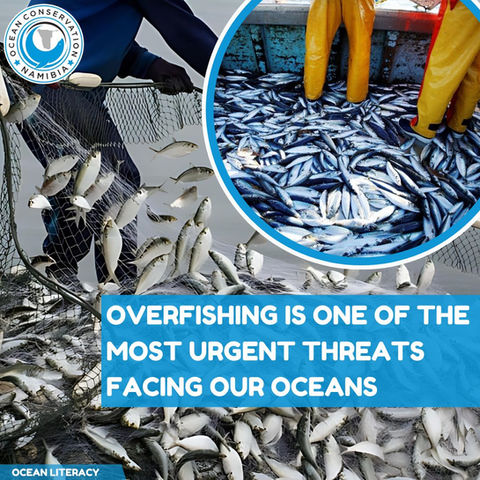
Threat Number 1: Overfishing
Overfishing is one of the most urgent threats facing our oceans today, and it’s time we understand its impact. When we harvest fish faster than they can reproduce, we disrupt the delicate balance of marine ecosystems. This not only leads to the decline of fish populations but also affects entire food chains, putting countless marine species at risk. The consequences extend beyond marine life. Overfishing destroys critical habitats like coral reefs and seagrass beds, which are essential for the health of ocean ecosystems.
Additionally, it undermines the livelihoods of millions of people who depend on fishing for their income and food security. Unsustainable fishing practices, such as trawling and bycatch, cause severe damage to the ocean floor and result in the accidental capture of non-target species, further disrupting marine biodiversity.
Additionally, it undermines the livelihoods of millions of people who depend on fishing for their income and food security. Unsustainable fishing practices, such as trawling and bycatch, cause severe damage to the ocean floor and result in the accidental capture of non-target species, further disrupting marine biodiversity.

Threat Number 2: Plastic Pollution
171 trillion pieces of ghost fishing gear, plastic bottles, shopping bags, clothing, packing straps and microplastics from sources like cosmetics, clothing, and industrial processes are floating in the ocean. Many sea creatures, including our Cape Fur Seals, mistake plastic for food, leading to ingestion or often fatal entanglement.
The effects of plastic pollution ripple through the ecosystem, even reaching our food chain. The Great Pacific Garbage Patch, located between Hawaii and California, is the largest accumulation of ocean plastic in the world. It is three times the size of France!
The effects of plastic pollution ripple through the ecosystem, even reaching our food chain. The Great Pacific Garbage Patch, located between Hawaii and California, is the largest accumulation of ocean plastic in the world. It is three times the size of France!

Threat Number 3: Climate Change
Rising temperatures due to increased greenhouse gas emissions are having a serious impact on marine environments worldwide. As ocean temperatures and currents shift, they disrupt the distribution of marine species, throwing food chains off balance and impacting vital fish stocks we rely on. The survival and migration of countless species are in danger.
Meanwhile, melting polar ice and rising sea levels are threatening coastal communities and vital habitats including mangroves and seagrasses, which are crucial for maintaining biodiversity and protecting our coastlines. It’s critical that we take action to combat climate change and safeguard our oceans for the future.
Meanwhile, melting polar ice and rising sea levels are threatening coastal communities and vital habitats including mangroves and seagrasses, which are crucial for maintaining biodiversity and protecting our coastlines. It’s critical that we take action to combat climate change and safeguard our oceans for the future.

Threat Number 4: The Dangers of Deep Sea Mining
Deep sea mining is the highly controversial process of extracting valuable minerals and metals from the ocean floor, typically from depths greater than 200 meters. However, exploitation of these resources results in serious environmental consequences.
The process disturbs delicate deep-sea ecosystems, destroying habitats that have taken centuries to develop. The chemicals used in mining can leach into the ocean, contaminating water and harming marine species. Mining operations create sediment plumes that can smother marine life, block sunlight, and disrupt food chains. The impacts of deep-sea mining are long-lasting and often irreversible, affecting the ocean’s health for generations.
The process disturbs delicate deep-sea ecosystems, destroying habitats that have taken centuries to develop. The chemicals used in mining can leach into the ocean, contaminating water and harming marine species. Mining operations create sediment plumes that can smother marine life, block sunlight, and disrupt food chains. The impacts of deep-sea mining are long-lasting and often irreversible, affecting the ocean’s health for generations.

Threat Number 5: Habitat Loss from International Trade
Ocean freight is one of the most cost-effective ways to transport large quantities of goods. Shipping lanes across the oceans form the backbone of international commerce, enabling the exchange of goods from raw materials to finished products.
But there are hidden costs to our ocean trade routes - oil spills, plastic rubbish, toxic waste, noise pollution, air emissions, invasive species, overfishing, port construction and excessive dredging, to name a few. All those factors lead to massive habitat loss.
But there are hidden costs to our ocean trade routes - oil spills, plastic rubbish, toxic waste, noise pollution, air emissions, invasive species, overfishing, port construction and excessive dredging, to name a few. All those factors lead to massive habitat loss.

Our Future Depends on the Sea!
It’s truly astonishing that, despite our deep reliance on the ocean for so many aspects of our lives, we fall short in protecting it. We often see ocean health take a backseat to other priorities.
We need to commit to reducing plastic use, support sustainable seafood, and advocate for stronger conservation policies.
We need to commit to reducing plastic use, support sustainable seafood, and advocate for stronger conservation policies.
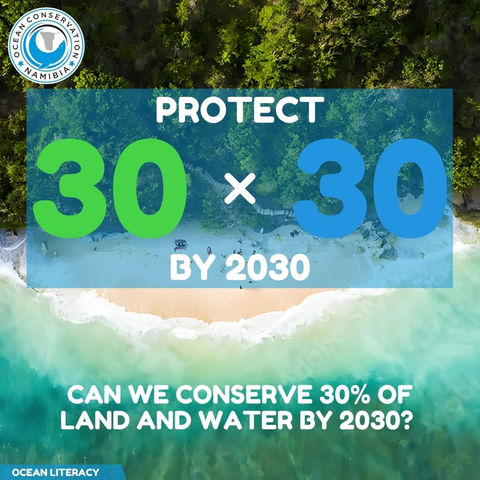
30 x 30 Initiative
This is a global conservation initiative aimed at protecting 30% of the Earth's land and ocean areas by the year 2030. This initiative aims to preserve critical ecosystems, safeguard biodiversity, and combat climate change by designating protected areas where human activities are restricted.
In the ocean, the 30x30 initiative would create marine protected areas (MPAs) that serve as safe havens for marine life, allowing ecosystems to recover from overfishing, pollution, and habitat destruction. Healthy oceans are essential for regulating climate, supporting fisheries, and sustaining human livelihoods.
In the ocean, the 30x30 initiative would create marine protected areas (MPAs) that serve as safe havens for marine life, allowing ecosystems to recover from overfishing, pollution, and habitat destruction. Healthy oceans are essential for regulating climate, supporting fisheries, and sustaining human livelihoods.
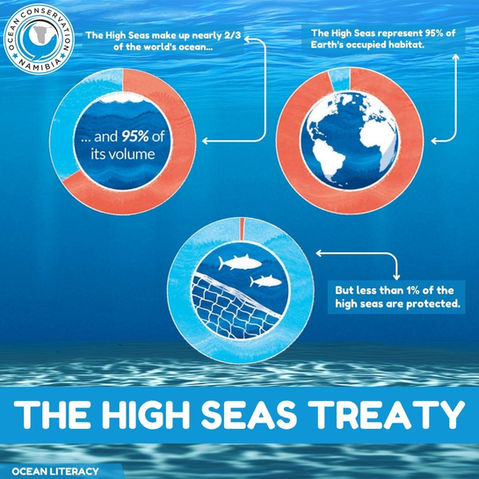
What are HIGH SEAS?
High seas are areas of oceans that lie beyond countries’ national waters (beyond 200 nautical miles). These are the largest habitat on Earth and are home to millions of species.
The “High Seas Treaty” is an international agreement, under negotiation at the United Nations, aims to protect marine biodiversity in areas beyond national jurisdiction, which covers more than 60% of the ocean.
The “High Seas Treaty” is an international agreement, under negotiation at the United Nations, aims to protect marine biodiversity in areas beyond national jurisdiction, which covers more than 60% of the ocean.

Marine Protected Areas (MPAs)
MPAs are designated regions of the ocean where human activities are more strictly regulated to protect marine life and biodiversity. These areas are crucial in preserving ecosystems that support thousands of marine species. By limiting fishing, drilling, and other potentially harmful activities, MPAs help ensure that vulnerable species have safe habitats where they can thrive and recover.
Marine Protected Areas play a key role in maintaining the health of our oceans and combating the impacts of climate change. With only about 8% of the world’s oceans currently protected, there is an urgent need for global action to expand these areas.
Marine Protected Areas play a key role in maintaining the health of our oceans and combating the impacts of climate change. With only about 8% of the world’s oceans currently protected, there is an urgent need for global action to expand these areas.

Marine Conservation Starts At Home
Protecting our oceans begins with the choices we make every day. Global initiatives and policies are crucial, but the impact of our personal actions is just as important.
What can you do to help our oceans? Reduce your plastic use, dispose of your waste properly, support only sustainable seafood or skip animal produce altogether, buy local to reduce the need for long distance transport, conserve water, participate in cleanups, and talk about it to encourage others to do so!
What can you do to help our oceans? Reduce your plastic use, dispose of your waste properly, support only sustainable seafood or skip animal produce altogether, buy local to reduce the need for long distance transport, conserve water, participate in cleanups, and talk about it to encourage others to do so!
Subscribe to Ocean Conservation's
Monthly Newsletter!
Want to see past editions? Visit our Newsletter Archive
Questions? Visit our Frequently Asked Questions
Want to download our free PDF calendar for 2026? Click HERE
The Ocean Conservation Namibia Trust is a registered charitable trust with the Namibian High Court.
Ocean Conservation Namibia, PO Box 5304, Walvis Bay Namibia
Ocean Conservation International is registered as a non-profit entity under chapter 501(c)(3) in the U.S.
Ocean Conservation International, 8 The Green, STE A, Dover , DE 19901
Contact us: info@ocnamibia.org
Please visit our Frequently Asked Questions for more information on our rescues.
bottom of page
